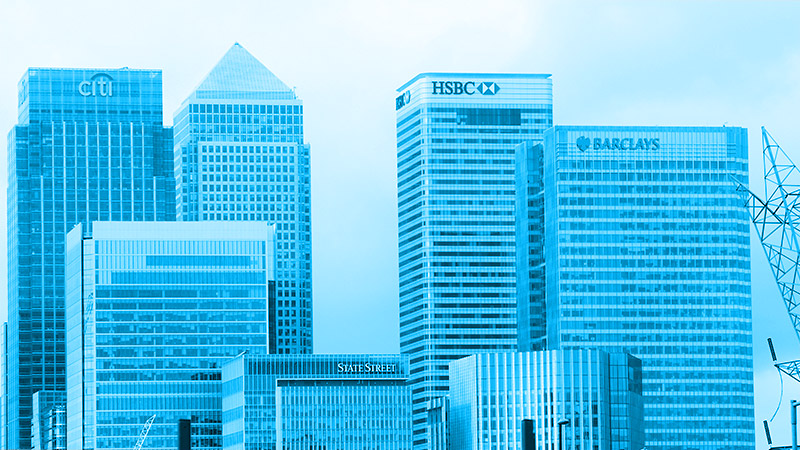Average Mortgage Rates UK: What Homebuyers Need to Know in 2025


Unsure which mortgage rate to expect when buying your home? The average two-year fixed-rate mortgage sits at 4.89% for 75% LTV, while five-year fixed rates average 5.19% at the same LTV. These figures shape your monthly payments and overall property budget.
The Bank of England held its base rate at 4.25% in June 2025, after cutting from 4.5% in May. This decision affects every mortgage rate you’ll see. Standard variable rates hover just below 8% – considerably higher than fixed-rate options. With inflation forecast to peak at 3.8% in July 2025, knowing today’s average mortgage rates helps you plan your finances effectively.
Why does this matter? Your mortgage rate determines your monthly payments for years to come.
Current Mortgage Rates
Today’s mortgage market offers better rates than we’ve seen in months. The average two-year fixed-rate mortgage at 75% LTV sits at 4.89%, while five-year fixed rates average 5.19% at the same LTV. These rates matter when you’re securing your mortgage this year.
The Bank of England has cut rates consistently since August 2024, bringing the base rate down from its 5.25% peak. February 2025 saw a cut to 4.5%, followed by another reduction to 4.25% in May 2025.
What’s next? The Bank meets again on 7 August 2025, with economists expecting further cuts ahead.
This downward trend creates opportunities for borrowers willing to act now.
Related reading:
Bank Rate Cuts
Recent History.
The Bank of England’s Monetary Policy Committee meets every six weeks to assess economic conditions and set the base rate. They consider inflation rates, economic growth, and employment figures. After holding the base rate at 4.25% in June 2025, the next decision comes on 7 August 2025.
The Rate Cut Timeline:
- August 2024: Cut from 5.25% to 5.00%
- November 2024: Cut from 5.00% to 4.75%
- February 2025: Cut from 4.75% to 4.50%
- May 2025: Cut from 4.50% to 4.25%
This marks a significant shift from consecutive rate increases that began in December 2021. The Bank signals that if inflation continues to ease, further rate reductions may follow – though they’ll take a “gradual and careful approach”.
Each cut directly impacts the mortgage rates you’ll see from lenders.

Current Average Mortgage Rates
Mortgage rates change based on your deposit size and lender choice. Rates typically increase as your loan-to-value percentage rises – lenders see higher LTV as greater risk.
Residential mortgage rates across all lenders:
- 4.89% for a two-year fixed-rate mortgage at 75% LTV
- 5.19% for a five-year fixed-rate mortgage at 75% LTV
- 4.79% for a two-year variable rate mortgage at 75% LTV
- 7.74% for standard variable rates (SVRs)
The “big six” lenders offer better rates than the market average:
- 4.26% for a two-year fixed-rate at 75% LTV
- 4.24% for a five-year fixed-rate at 75% LTV
- 4.70% for a two-year variable rate at 75% LTV
- 6.75% for standard variable rates
Buy-to-let mortgages cost more than residential mortgages. The current average for a two-year fixed-rate buy-to-let mortgage at 75% LTV sits at 5.24% across all lenders, dropping to 4.5% among the big six lenders.
Got a larger deposit? Rates become progressively better. Rightmove data from early July 2025 shows the average two-year fixed mortgage rate at 60% LTV stands at 3.91%, with the average five-year fixed rate at 60% LTV at 4.00%.
Compare these rates carefully. Your deposit size makes a significant difference to your monthly payments.
Mortgageable offers a free Equifax Credit Report as part of its service, with no obligation to proceed. Something worth considering.
What Drives Today's Rates?
The Bank of England base rate shapes every mortgage rate you see. Recent base rate cuts create downward pressure across all lenders.
Inflation sits at 3.4% for May 2025, still above the Bank’s 2% target. The Office for Budget Responsibility forecasts inflation will peak at 3.8% in July 2025 before falling back to 2%. Stubborn inflation could slow future rate cuts.
Markets expect another cut or two this year, possibly as soon as August. Many lenders price in these anticipated reductions.
Swap rates – the inter-bank lending rates that influence fixed mortgage pricing – fell in April 2025, prompting lenders to reduce mortgage rates. This trend continued into July with multiple major lenders announcing cuts.
Recent Lender Rate Cuts:
- Nationwide cut rates by up to 0.2 percentage points across fixed-rate deals
- Halifax reduced some rates by up to 0.1 percentage points
- Barclays lowered their 2-year fix (85% LTV) from 4.23% to 4.14%
- TSB announced reductions of up to 0.2%
- HSBC cut rates across both residential and buy-to-let mortgages
Brokers describe this as a “mini price war” among mortgage providers. However, the lowest-rate deals still require substantial deposits and come with significant fees.
Competition benefits you. More lenders cutting rates means better deals for borrowers.
Recent Mortgage Market Trends
The mortgage market is gaining momentum. After April’s slowdown, May brought positive indicators with increases in both net borrowing and approvals. Outstanding residential mortgage loans rose 1.2% from the previous quarter to £1,698.5 billion—up 2.6% year-on-year.
Gross mortgage advances jumped 12.8% from the previous quarter to £77.6 billion. This marks the highest level of new advances since Q4 2022 and sits 50.4% higher than last year. New mortgage commitments dropped slightly by 1.5% to £68.2 billion, yet remained 13.5% higher than the previous year.
All major UK lenders now offer fixed mortgage deals below 4%. You’ll need significant deposits and substantial fees for these rates. This marks a clear improvement from earlier in 2025 when such rates briefly appeared in February before vanishing again.
The gap between two-year and five-year fixed rates has narrowed considerably. One broker notes: “More borrowers are taking two-year fixes on the assumption rates will reduce, but many may be better off taking longer-term fixes for the payment security”. Today’s best two-year and five-year fixed rates sit at similar levels for borrowers with at least 40% deposit or equity.
What does this mean for you? More lenders are competing for your business, creating better deals across the market.
What This Means For Your Monthly Payments
For a typical first-time buyer property with an average asking price of £228,551, you’re looking at £1,085 per month on a five-year fixed 85% LTV mortgage over 25 years.
Tracker Mortgages Are Back.
These variable rate products follow the Bank of England base rate plus a set margin, letting you benefit automatically from future rate cuts without remortgaging. Some tracker deals even let you switch to a fixed rate without penalty when you feel the time is right.
Fixed Rates Still Dominate.
Most borrowers, particularly those on tight budgets, still choose fixed-rate mortgages for payment certainty. Mark Harris from SPF Private Clients suggests: “For those not sure whether to fix for two or five years, a two-year fix looks the right call in the current environment. But for those who can’t afford to be wrong, a five-year fix, or even longer, is worth considering”.
Lenders are also offering improved terms to remortgagers, with the potential to borrow larger amounts relative to income, particularly for first-time buyers.
Future Outlook for Mortgage Rates in 2025
Where are rates heading? Most analysts expect a continued gradual decline throughout 2025, though perhaps not as rapidly as some had hoped. The consensus suggests two further interest rate cuts in 2025—one in August and one in November—potentially bringing the base rate down to 3.75%. Markets are currently pricing in a nearly 90% chance of an interest rate cut in August.
Some analysts push for faster easing. Bank of England rate-setter Alan Taylor advocates for three more interest rate cuts this year. The OBR forecasts tell a different story—average mortgage rates may increase from 3.7% to 4.5% over the next three years as a result of increased government borrowing.
Rate Predictions for 2025:
Rightmove predicts two-year and five-year fixed rates will average 4.73% and 4.66% respectively in 2025, with rates gradually declining over the rest of the year. They forecast average fixed mortgage rates will settle around 4.0% in 2025, aligning with expectations for a Bank of England base rate near 3.5% by year-end.
Global economic uncertainty could accelerate the pace of interest rate reductions. The fallout from the US tariffs policy has led markets to anticipate more base rate cuts this year than previously expected. This international dimension adds complexity to the mortgage rate outlook.
What could disrupt this downward trajectory?
Inflation remains a key concern. Some experts warn that “sticky” inflation could put the brakes on interest rate reductions. The Bank of England has cautioned that “the world is highly unpredictable”, suggesting external shocks could alter their plans for future rate cuts.
The prediction consensus points to rates around 3.5% by year-end. However, your mortgage decision shouldn’t rely solely on these forecasts.
Strategies for Homebuyers and Remortgagers
Secure Your Rate Now.
Looking for a mortgage today? Lock in your rate offer now. This protects you against market volatility while keeping your options open if rates continue falling before completion.
Consider Tracker Mortgages.
Expect rates to fall faster than markets predict? Tracker mortgages offer lower fees and fewer penalties, giving you the flexibility to remortgage again soon.
Act Before Your Fixed Rate Ends.
Standard variable rates average 7.74%—or 7.60% according to Rightmove data. Almost any fixed-rate deal beats reverting to your lender’s SVR.
Apply Early, Switch Later.
Smart borrowers apply for deals months before their current deal expires. Secure a rate as your safety net. If better rates emerge before your new deal starts, you can still switch. Peace of mind with upside potential.
Two Years or Five?
Two-year fixes offer slightly higher initial rates but let you grab potentially lower rates in 2027. Five-year fixes provide payment certainty—valuable if you’re on a tight budget or prefer stability over potential savings.
Best of Both Worlds.
Some lenders offer innovative products combining both approaches. Virgin’s five-year fix includes only two years of early repayment charges, providing “the affordability and security benefits of the longer term but also the flexibility to exit into a hopefully better rate with no penalties after two years”.
Mortgage rates have improved significantly since the 2022-2023 peaks. While rates remain higher than historic pre-2022 lows, the downward trajectory offers hope. Understanding current average mortgage rates and their influencing factors helps you make informed decisions about your property purchase or remortgage in 2025.
Key Takeaways
Understanding current mortgage rates and market trends is crucial for making informed property decisions in 2025’s evolving financial landscape.
• Current rates favour borrowers: Two-year fixed mortgages average 4.89% at 75% LTV, with major lenders offering even better rates around 4.26%
• Base rate cuts continue: Bank of England reduced rates from 5.25% to 4.25%, with further cuts expected in August and November 2025
• Two-year fixes offer flexibility: With rates expected to fall further, shorter-term mortgages allow borrowers to benefit from future reductions more quickly
• Act before SVR kicks in: Standard variable rates average 7.74%, making any fixed-rate deal significantly cheaper than reverting to your lender’s default rate
• Rates could reach 3.5% by year-end: Experts predict continued declines throughout 2025, with leading two-year fixes potentially settling around 3.5%
The mortgage market is experiencing its most competitive period since 2022, with lenders engaged in a “mini price war” that benefits borrowers. However, the best deals still require substantial deposits and may include significant fees, making it essential to compare the total cost rather than just headline rates.
















